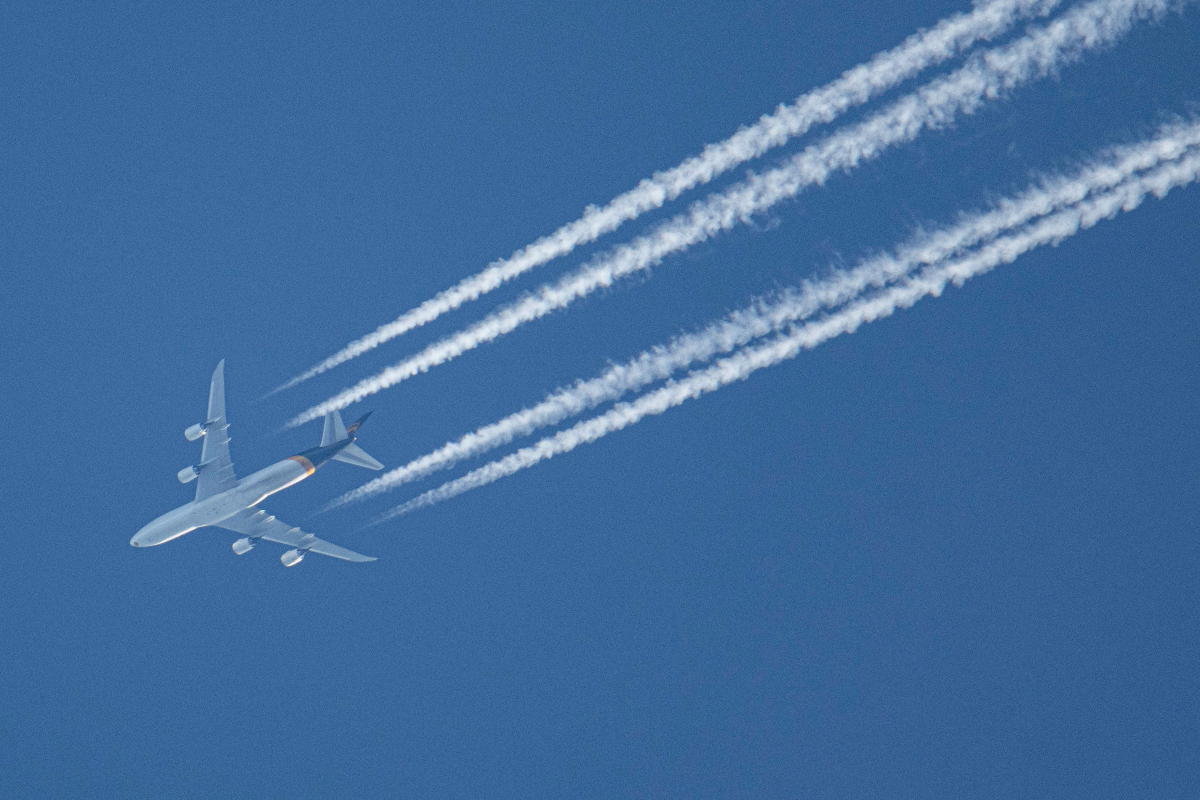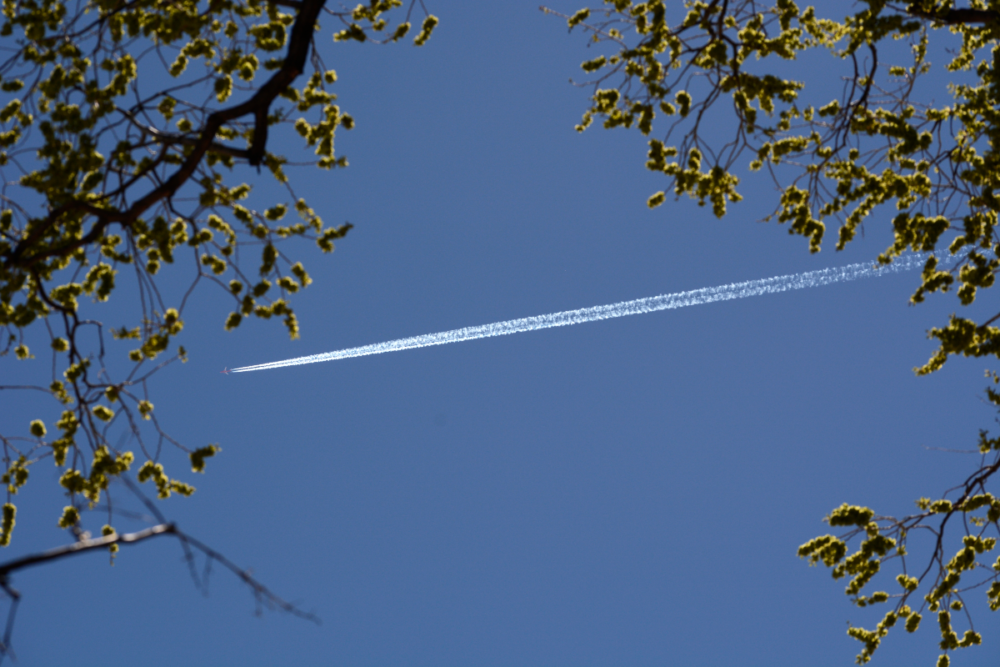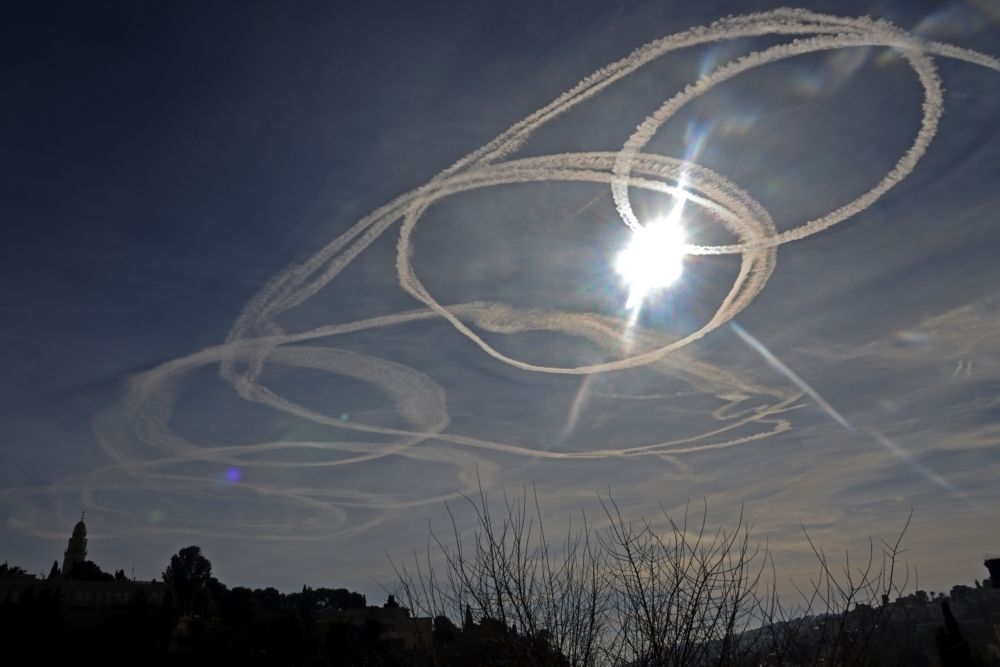Soaring ten or more kilometers above you, high-flying jets can be hard to spot on their own. But the white lines they leave in their wake, known as contrails, often give away the aircraft's presence. But why do aircraft leave these lines in the sky?
Those white lines in the sky are contrails
In a nutshell, contrails are mostly water in the form of ice crystals. Clouds are composed of the same stuff. But clouds are a natural phenomenon, whereas most contrails are not. The most distinctive contrails come from water vapor in the jet's exhaust combining with high-altitude low-ambient temperature to form the white lines.
"The hot, humid exhaust from jet engines mixes with the atmosphere, which at high altitude is of much lower vapor pressure and temperature than the exhaust gas," says Jenn Stroud Rossmann in Scientific American. "The water vapor contained in the jet exhaust condenses and may freeze, and this mixing process forms a cloud very similar to the one your hot breath makes on a cold day."
Stroud Rossmann says jet engine exhaust contains carbon dioxide, oxides of sulfur and nitrogen, unburned fuel, soot, and metal particles, as well as water vapor. The soot and other particles in the exhaust provide handy condensation sites for the water vapor.
A 2015 contrails factsheet produced by the United States Environmental Protection Agency (EPA) says contrails have been in our skies since the advent of the jet age.
"Depending on the temperature and the amount of moisture in the air at the aircraft altitude, contrails evaporate quickly (if the humidity is low) or persist and grow (if the humidity is high)," the EPA factsheet reads. "Jet engine exhaust provides only a small portion of the water that forms ice in persistent contrails. Persistent contrails are mainly composed of water naturally present along the aircraft flight path."
Stay informed: Sign up for our daily and weekly aviation news digests.
Environmental conditions must be right for contrails to form
While all jet engines produce exhaust, that exhaust does not necessarily form contrails. Conditions in the jet's wake must be right. The surrounding humidity must be high enough (or the air temperature low enough) for water condensation to occur. Even at ten kilometers above the Earth, these environmental conditions don't always occur.
"Atmospheric temperature and humidity at any given location undergo natural daily and seasonal variations and hence, are not always suitable for the formation of contrails," says the EPA.
Condensation from decreases in pressure can also create contrails, but these are usually finer contrails than produced by the jet's engine exhaust. When a wing generates lift, it causes a vortex to form at the wingtip and at the tip of the flap when in use. Both the wingtips and flap tips break the airflow.
That reduces pressure and temperature in the vortex trailing the interrupted airflow. In turn, that can cause water vapor on hot, humid days to condense into ice crystals, forming white lines in the sky.
One of the side-effects of the travel downturn is the absence of contrails in many parts of the world. Skies that are normally messy with dispersing contrails are now blue and uninterrupted. Depending on your point of view, this is a good or bad thing. But one thing's for sure, the sky filling with contrails again will be a sign of air travel getting back to business.



